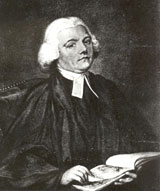Journey Into Spring
| Movie | |
|---|---|
| Original title | Journey Into Spring |
| Country of production | United Kingdom |
| original language | English |
| Publishing year | 1958 |
| length | 28 minutes |
| Rod | |
| Director | Ralph Keene |
| script | Laurie Lee (comments) |
| production | Ian Ferguson |
| music | Edward Williams |
| camera | Patrick Carey |
| cut | Ralph Sheldon |
| occupation | |
| |
Journey Into Spring (German to travel in the spring ) is a British documentary - short film by Ralph Keene from 1958, produced by Ian Ferguson .
The film was nominated for an Oscar in two categories .
content
The film documents a journey through the time of spring. The first excursion focuses on the 18th century and pays tribute to the work of the English country pastor , naturalist and ornithologist Gilbert White (1720–1793). The second study observes the changing natural landscape near White's hometown of Selborne in Hampshire from March to May.
The breeding cycle for coots , pond chickens and other animals begins in March, they look for partners and build their nests. Frogs and wagtails walk around in the shallow river bank , while mice, ants and hedgehogs circle around. Catkins sprout.
In April, nests of many different kinds can be observed, such as the skylark , the coot that breeds in hedges, the tailed tit , which prefers a nest in the tower, and that of the dabchick , whose nest is like pieces of driftwood to deceive predators. Tadpoles hatch in the waters and gray wagtails nest in the walled bank of a shallow stream.
In May everything seems to vibrate with life. The grass turns bright green, leaves change color and birds are busy looking after their brood. Voles are looking for green shoots and leaves. Oaks , blackthorns , hawthorns , crawfish trees , plum trees and white wild cherries start to bloom. Animals enjoy the sun's rays. A cuckoo cub hatches in the hedge nest of a pair of sparrows and immediately asserts itself against its "siblings". By the brook flit sticklebacks and moles dig on. The swallows come back from Africa , while house martins are already building their nests under the roofs and the bees keep the cycle of nature in motion.
This process has remained the same in Selborne for almost two centuries. The natural features shape the characteristics of the English landscape and delight those who are looking for something like this.
Production notes, background
The film was produced by British Transport Films and distributed by Paramount Pictures , Schoenfeld Films and BFI Video.
English poet, novelist and screenwriter Laurie Lee wrote the commentaries spoken by Stephen Murray, and the camera was directed by well-known wildlife cameraman Patrick Carey. With this film, director Ralph Keene started a long series of natural history films for British Transport Films. British film producer Edgar Anstey declared the film one of his favorites; the film company gained a considerable reputation for its natural history films, which was underpinned by two Academy Award nominations for the first film.
The film was published by BFI British Transport Films and is included on the Off the Beaten Track DVD .
reception
criticism
In Screen Online states that this is one of the most beautiful films of BTF well over half a century later and a valuable record of the activities and the diversity that go into British ponds and hedges in front of him and had been detained.
Awards
- 1958: Winner of the BAFTA Film Awards in the category "Best Documentary Short Film"
Oscar nominations in the categories "Best Short Film" and "Best Documentary Short Film"
- 1959: Journey Into Spring
Web links
- Journey Into Spring in the Internet Movie Database (English)
- The 31st Academy Awards | 1959 sS oscars.org
Individual evidence
- ↑ a b c Journey Into Spring sS screenonline.org.uk (English). Retrieved January 14, 2019.

